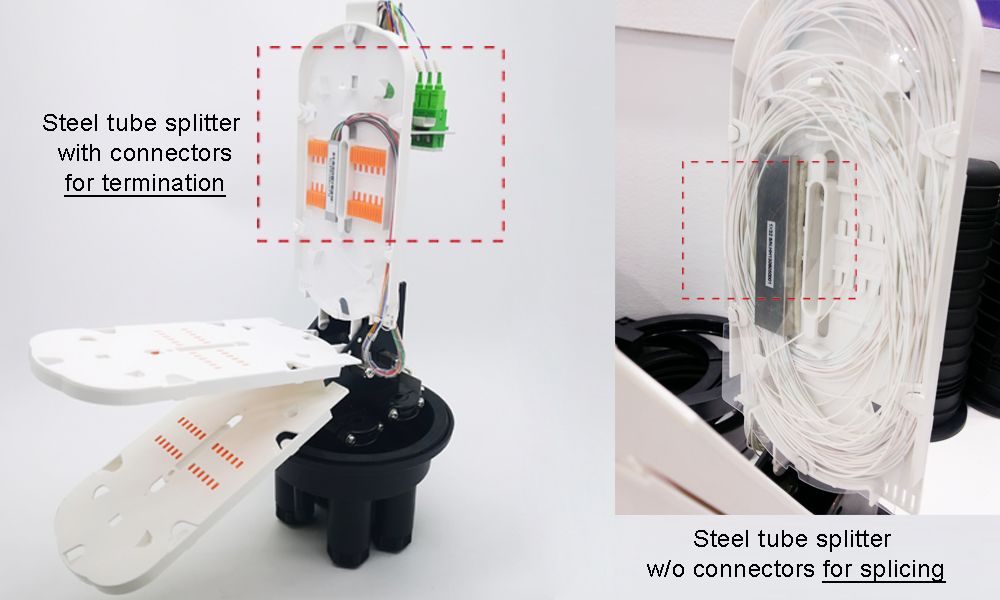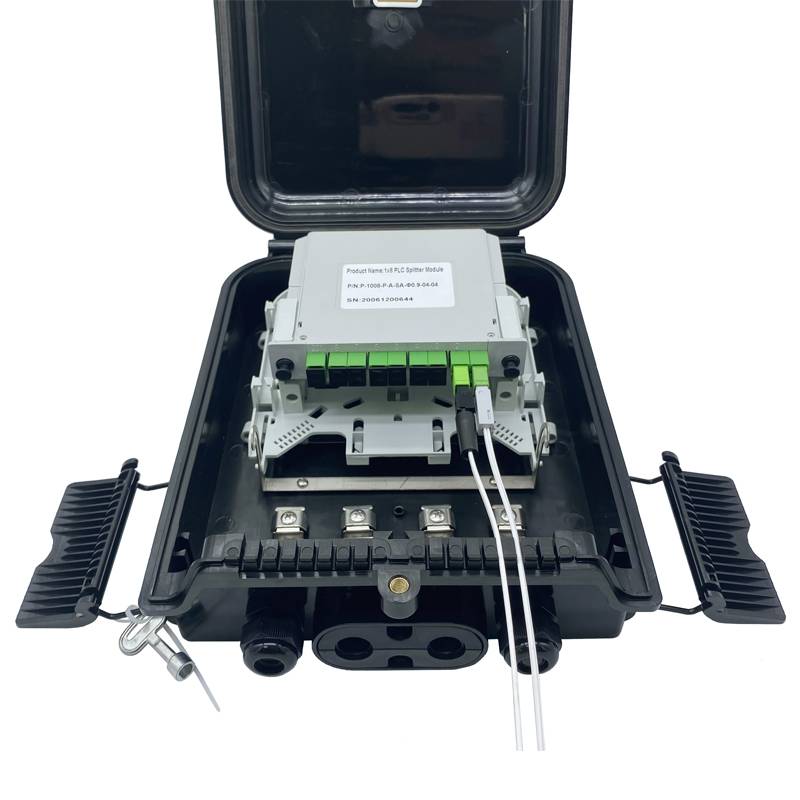Fiber Optic Cable Splitter Installation Method
In fact, the installation of the fiber optic cable splitter is very simple, because it is already a cable terminal product, mainly to see whether it is with a fiber connectors or not, and the packaging type.
For example, plc splitter without connector like bare splitter is generally used for fiber splicing. It can be operated according to the instructions for fiber optic splicing machine. During splicing, pay attention to the winding operation and be careful not to break the fiber. This type of fiber optic cable splitter is generally placed in fiber splice closure or fiber splitter box.

If plc splitter with connector, like bare splitter, mini plc splitter, there is a steel tube to protect the chip in the middle and the loose tube adhesion position.
Usually it is not used alone, but is placed in a fiber distribution box or fiber terminal box, with a special card slot or protective device to clamp the main stainless steel tube. Then use a fiber optic adapter to dock and fix the connector, and coil the excess fiber.
ABS PLC splitter and LGX PLC splitter are not used alone twoo, also placed in a fiber access terminal or wall mount termination box, widely used in FTTH network.
Note:
Before installation, remember to use a fiber optic cleaning kit to clean the dust from the adapter hole and connector hole to ensure higher precision docking.
Fiber Optic Cable Splitter Testing and Acceptance Criteria
After installing the fiber optic cable splitter, you need to test the link attenuation and troubleshoot to ensure smooth fiber link operation and minimize attenuation.
Basic Testing
- Optical power test: Input optical power – output optical power ≤ nominal splitter loss (e.g., 1:8 PLC standard loss is approximately 10.7dB).
- Uniformity test: Power variation between output ports (eg. Loss uniformity of 1×16 PLC splitter<1dB).
For more details, please refer to the article: What are the technical parameters of optical passive splitters?
Troubleshooting
| Phenomenon | Possible causes | Solution |
| Abnormally low optical power | Interface contamination | Clean the connector again. |
| No signal on some ports | Fiber bending too much | Check the bend radius and re-align the wiring. |
| Intermittent signal interruption | Connector not locked | Verify the latch is fully locked. |
Advanced detection
Use OTDR to detect the link: if the reflection peak is greater than 4dB, the breakpoint needs to be checked; if the attenuation slope is greater than 0.4dB/km, the optical fiber needs to be replaced.
Fiber Optic Cable Splitter Operation precautions
- No live operation: Turn off the power of the optical module before plugging and unplugging the optical fiber;
- Split level limit: The total splitting ratio of the FTTH network is ≤1:64 to avoid insufficient optical power;
- Medical/industrial scenarios: Use stainless steel encapsulated splitters in the operating room and disconnect the optical fiber before disinfection; Select anti-vibration splitters such as PLC ABS in strong vibration environments.
- Maintenance specifications: Use optical power meters to randomly check 10% of ports every quarter, and annual OTDR full-link detection.
Fiber Optic Cable Splitter FAQ
Can you teach us how to install fiber optic cable spiltter in fiber spliter box?
Yes, below installation video for your reference.
When installing a splitter, especially a mini plc splitter or bare fiber splitter, extreme care is required. We perform optical fiber testing before and after installation to ensure that the installation does not damage the splitter structure and affect loss.
What are the common types of optical splitters?
Optical splitters can be categorized by packaging method into fiber optic tube splitters, PLC ABS, rack-mounted PLC, PLC splitter module, splitter LGX, and PLC splitter cassette types. For details, see:
Choose the right fiber optic splitter types for passive optical network
How to choose the right fiber optic splitter?
Selecting the right fiber optic cable splitter requires comprehensive consideration of network requirements, environmental compatibility, and technical specifications, based on the actual needs of the project.
Read More In Article: How to choose a suitable optical fibre cable splitter?







